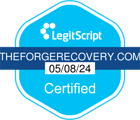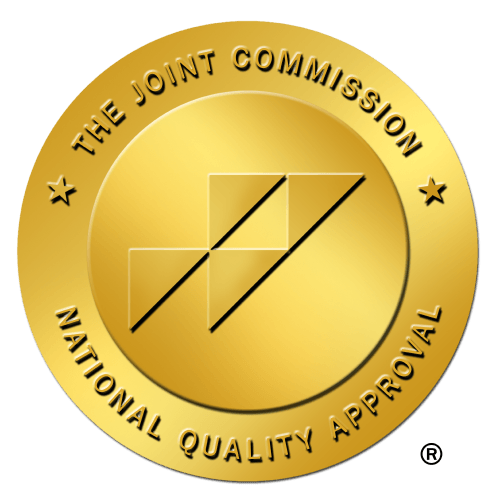Understanding the Process of Cognitive Behavioral Therapy (CBT)


Discover how Cognitive Behavioral Therapy (CBT) helps reframe negative thoughts and treat addiction. Explore options like TMS therapy for depression near you.
Cognitive behavioral therapy (CBT) is a proven, structured approach that helps individuals recognize and change negative thought patterns affecting their emotions and behaviors. Originally developed in the 1960s by Dr. Aaron Beck, CBT is now widely used to treat mental health disorders, including anxiety, depression, and addiction. At The Forge Recovery Center, we integrate evidence-based treatments like CBT to support lasting recovery. If you're searching for TMS therapy for depression near you, CBT can also be a valuable tool in your healing journey. In this article, we will explore the process of CBT and how it fosters mental well-being.
Core Principles of CBT

Cognitive behavioral therapy (CBT) is based on the idea that thoughts, emotions, and behaviors are deeply interconnected. By understanding and changing negative thought patterns, individuals can improve their emotional responses and behaviors. The core principles of CBT stem from three foundational models: the cognitive model, the behavioral model, and the cognitive-behavioral model, which integrates both approaches.
The Cognitive Model: How Thoughts Influence Emotions and Behaviors
The cognitive model suggests that our thoughts shape our emotions and influence our actions. Developed by psychiatrist Aaron Beck, this model highlights the role of cognitive distortions—irrational or exaggerated thinking patterns that contribute to emotional distress and maladaptive behaviors.
For example:
Someone struggling with addiction may think, "I’ve relapsed once, so I’ll never recover." This all-or-nothing thinking leads to hopelessness and continued substance use.
A person with anxiety may believe, "If I fail this task, everyone will think I'm incompetent." This catastrophizing fuels stress and avoidance behaviors.
CBT helps individuals recognize these distorted thoughts, challenge their accuracy, and replace them with healthier, more balanced perspectives. By doing so, they experience less emotional distress and improved decision-making.
The Behavioral Model: The Role of Learned Behaviors in Mental Health
The behavioral model focuses on how behaviors are learned through experiences and how they reinforce either positive or negative mental health outcomes. It suggests that people develop patterns of behavior based on reward and punishment—either reinforcing unhealthy habits or promoting healthier coping strategies.
Key concepts in the behavioral model include:
Classical Conditioning: Associations between stimuli and responses. For instance, someone may associate social gatherings with anxiety due to past negative experiences.
Operant Conditioning: Behaviors are reinforced or discouraged based on consequences. If substance use temporarily relieves stress, it becomes reinforced, making addiction harder to break.
CBT incorporates behavioral techniques such as exposure therapy (gradual confrontation of fears) and behavioral activation (engaging in positive activities to improve mood). These methods help individuals unlearn destructive behaviors and replace them with healthier habits.
The Cognitive-Behavioral Model: Integrating Thoughts and Behaviors
The cognitive-behavioral model merges both approaches, emphasizing that thoughts and behaviors influence each other in a cycle. Negative thoughts lead to harmful behaviors, which reinforce negative emotions, creating a self-perpetuating loop.
For example:
A person with depression may think, “Nothing I do matters.” This leads them to withdraw from social activities, reinforcing feelings of loneliness and deepening their depression.
Someone in addiction recovery might believe, “I can’t cope without substances.” This thought increases stress, leading to relapse, which reinforces the original belief.
CBT breaks this cycle by targeting both thoughts and behaviors simultaneously. It teaches individuals how to challenge negative thinking patterns while also engaging in behaviors that support emotional well-being. By modifying both elements, individuals develop resilience, self-efficacy, and healthier coping mechanisms.
Why These Principles Matter
Understanding these core principles of CBT is essential for overcoming mental health challenges and addiction. By recognizing how thoughts, emotions, and behaviors interact, individuals can take proactive steps toward lasting recovery and mental well-being.
The CBT Process

Cognitive behavioral therapy (CBT) follows a structured approach to help individuals identify, challenge, and change negative thought patterns and behaviors. This process is highly personalized, allowing individuals to develop coping strategies that support long-term mental well-being and addiction recovery.
Are You Struggling with Mental Health or Addiction?
We Can Help. Call Us Now!
CALL: 877-839-1772
Assessment and Goal Setting
The first step in CBT is a comprehensive assessment, where a therapist works with the individual to understand their unique challenges, thought patterns, and behavioral responses. This involves:
Initial Evaluation: The therapist gathers information about emotional struggles, behavioral patterns, and triggers contributing to distress or addiction.
Goal Setting: Together, the therapist and individual define specific, measurable, achievable, relevant, and time-bound (SMART) goals. These may include reducing anxiety in social settings, managing triggers for substance use, or improving self-esteem.
By establishing clear objectives, individuals gain a roadmap for their recovery, making progress more tangible and motivating.
Identifying Negative Thought Patterns
Many individuals struggling with mental health conditions or addiction engage in cognitive distortions—irrational or exaggerated thoughts that reinforce negative emotions. Common distortions include:
Overgeneralization: “I failed once, so I will always fail.”
Catastrophizing: “If I relapse, my entire recovery is ruined.”
Black-and-White Thinking: “If I’m not perfect, I’m a complete failure.”
Through CBT, individuals learn to recognize these distortions and understand how they impact emotions and behaviors. By bringing awareness to these harmful thought patterns, individuals gain greater control over their emotional responses.
Challenging and Restructuring Thoughts
Once negative thought patterns are identified, the next step is to challenge and reframe them into more balanced perspectives. Therapists guide individuals through techniques such as:
Cognitive Restructuring: Actively disputing irrational beliefs and replacing them with realistic thoughts. For example, instead of thinking, "I can't recover," an individual might reframe it as, "Recovery is challenging, but I have support and tools to succeed."
Socratic Questioning: Therapists ask targeted questions to help individuals critically examine the evidence for and against their negative thoughts.
Behavioral Experiments: Testing the accuracy of negative beliefs through real-life experiences. For example, if someone believes they will always be judged in social situations, they may be encouraged to interact with others and assess the actual outcome.
This process breaks the cycle of negativity and helps individuals develop a more constructive and empowering mindset.
Behavioral Interventions
CBT emphasizes action-based strategies that encourage positive behavioral changes. This includes:
Behavioral Activation: Encouraging activities that improve mood and motivation, such as exercise, hobbies, or social interactions.
Exposure Therapy: Gradually confronting fears or anxieties in a controlled manner to reduce avoidance behaviors. This is especially helpful for individuals dealing with anxiety, PTSD, or phobias.
Developing Healthy Routines: Establishing daily habits that reinforce stability, such as maintaining a sleep schedule, engaging in mindfulness, or creating a structured recovery plan.
By changing behaviors, individuals experience positive emotional shifts and build confidence in managing challenges.
Skill Development and Homework Assignments
CBT is not limited to therapy sessions—practicing skills outside of sessions is crucial for lasting change. To reinforce learning, therapists assign personalized exercises, including:
Journaling: Tracking thoughts, emotions, and behavioral patterns to increase self-awareness.
Mindfulness and Stress-Reduction Techniques: Teaching relaxation strategies like deep breathing, progressive muscle relaxation, or guided meditation.
Problem-Solving Skills: Learning structured approaches to tackling difficult situations instead of reacting impulsively.
By applying these techniques in daily life, individuals gain the tools to manage stress, reduce cravings, and maintain long-term mental well-being.
The Power of the CBT Process
CBT provides individuals with a structured, evidence-based framework to overcome negative thoughts and behaviors, making it a highly effective treatment for addiction and mental health challenges. Through assessment, cognitive restructuring, behavioral interventions, and skill development, individuals gain the self-awareness and resilience needed for lasting recovery and emotional balance.
Effectiveness and Benefits of CBT

Cognitive behavioral therapy (CBT) is one of the most widely researched and effective forms of psychotherapy. Studies show that CBT can significantly improve symptoms of depression, anxiety, addiction, PTSD, and other mental health disorders by addressing the root causes of negative thoughts and behaviors. Its structured, goal-oriented approach empowers individuals to take control of their mental well-being and build lasting coping skills.
Evidence Supporting CBT’s Efficacy
CBT is backed by decades of clinical research demonstrating its effectiveness in treating various mental health conditions, including:
Depression and Anxiety Disorders: Multiple studies have found that CBT is as effective as medication for mild to moderate depression and anxiety, with longer-lasting benefits.
Substance Use Disorders: CBT helps individuals in addiction recovery identify triggers, develop coping strategies, and prevent relapse by reshaping harmful thought patterns.
Post-Traumatic Stress Disorder (PTSD): Trauma-focused CBT has been proven to reduce PTSD symptoms by helping individuals process distressing memories in a safe, controlled manner.
Obsessive-Compulsive Disorder (OCD) and Phobias: Exposure and response prevention (a key CBT technique) is highly effective in reducing compulsive behaviors and irrational fears.
In many cases, CBT is used alongside other treatments to enhance outcomes. For instance, individuals seeking TMS therapy for depression near me may benefit from combining it with CBT. While transcranial magnetic stimulation (TMS) targets brain activity through non-invasive magnetic pulses, CBT helps address the thought patterns contributing to depression. This combination provides a comprehensive, multi-faceted approach to mental health treatment.
Advantages of CBT
CBT stands out from other therapeutic approaches due to its structured, evidence-based, and self-empowering nature. Some of its key benefits include:
Short-Term and Goal-Oriented: Unlike traditional talk therapy, CBT is typically time-limited, with many individuals seeing improvements in 10-20 sessions.
Practical and Skills-Based: It teaches individuals concrete strategies to manage emotions, reduce stress, and prevent relapse.
Focuses on Self-Empowerment: CBT equips individuals with tools they can use long after therapy ends, promoting independence and resilience.
Effective for Co-Occurring Disorders: Many individuals struggling with addiction also face depression, anxiety, or trauma. CBT addresses these interconnected issues, enhancing overall recovery success.
At The Forge Recovery Center, we integrate CBT into our personalized treatment plans because of its proven ability to help individuals overcome addiction and mental health challenges. Whether you're seeking help for substance use, anxiety, or depression—or even exploring options like TMS therapy for depression —CBT can be a transformative tool in your healing journey.
Are You Struggling with Mental Health or Addiction?
We Can Help. Call Us Now!
CALL: 877-839-1772





